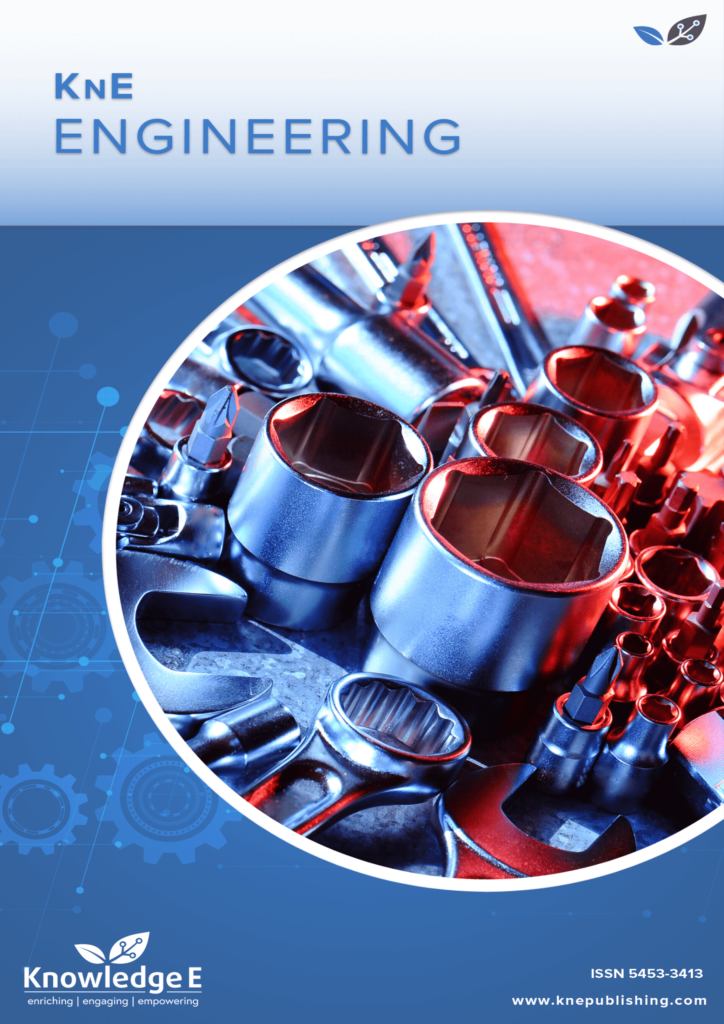
KnE Engineering
ISSN: 2518-6841
The latest conference proceedings on all fields of engineering.
Design of a Patient Specific, 3D printed Arm Cast
Published date:Feb 09 2017
Journal Title: KnE Engineering
Issue title: The International Conference on Design and Technology
Pages:135-142
Authors:
Abstract:
3D printing is a manufacturing technique by which the material is added layer by layer to create a physical three-dimensional object. This manufacturing technique had primarily found uses in academic and commercial sectors for prototyping and product realization purposes. However, more recently the home consumer market has seen a surge in low cost printers bringing this capability to the masses. More recently 3D printing has seen considerable interest from the clinical sector, where alongside the synergistic use with medical imaging data, a whole generation of patient specific implantable technologies, splints/casts and resection guides can be created. Predominantly, clinical applications have focused on the use of 3D printing for bone replacement, however with the advent of more sophisticated multi-material printers, interest has now begun to move to applications in orthotics and orthopedic casting.
This study is to review and evaluate the feasibility of designing and realizing a more patient specific orthopedic cast to surpass current limitation with traditional fiberglass/plaster casts, through the use of advanced 3D modelling and printing techniques. To directly compare the efficacy of the traditional and 3D printed casts, we shall investigate critical parameters such as the time for manufacture, the overall weight of the final product, the accuracy off the cast relative to the patient’s unique anatomy and additional user-centric metrics (comfort, aesthetics, etc.). The design examined made use of advanced mesh structures throughout the bulk of the cast, such that the device would require less material (by weight) during fabrication, could allow for tunable weight and mechanical properties and allow for air penetration to the person skin, thereby reducing discomfort due to prolonged moisture exposure (chaffing, bad smells, etc.). As the primary focus of this study is the design and product realization phases and we shall not assess metrics relating to patient recover time or experience.
Overall it was found that the 3D printed cast was significantly lighter, with improved water repellent and air circulation properties, as compared to a traditional cast. Through the use of high precision design/manufacturing techniques, the final device could be accurately reproduced to match the test patient’s unique anatomy, thereby optimizing the orientation of the patient’s bones during post fracture recovery. It was however found that the manufacturing time for the 3D printed cast was slower than traditional casting methods owing to the additional time during the design phase. In future work we aim to address this limitation and to devise a streamlined methodology such that a generic cast design can be adapted to patient specific anatomical data through parametric design algorithms.
Ultimately, it was found that through the use of advanced design techniques, patient specific data and 3D printing, a custom orthopedic cast could be realized and with significant potential to augment current use of this technology for surgical intervention and improve patient outcomes. The use of advanced manufacturing in the medical field will likely enable more patient specific/user-centric treatment in the near future.
References:
S. Anne, and M. Boyd, University of Pittsburgh School of Medicine, Pittsburgh, Pennsylvania, HOLLY J. BENJAMIN, M, University of Chicago, Chicago, Illinois & CHAD ASPLUND, M, MC, USA, Eisenhower Army Medical Center, Fort Gordon, Georgia 2009, ’Principles of casting and splinting’, American Family Physician, vol. 27, no. 1, p. 7.
Carl R. Chudnofsky, and SEB, Splinting Techniques, in Roberts: Clinical Procedures in Emergency Medicine,
vol. 5, (5th edn) Saunders/Elsevier, 28, (2010).
L. G. Collins, Industry Case Study: Rapid Prototype of Mountain Bike Frame Section., Virtual and Physical Prototyping, (2016).
Gregory P. Guyton, and MD, An analysis of iatrogenic complications from the total contact cast, FOOT & ANKLE INTERNATIONAL, 26, no. 11, 5, (2005), 10.1016/j.jsams.2011.11.248.
Gustavo Cardoso Vieira, MDCRF, Antônio Carlos Shimano, Nilton Mazzer, Cláudio Henrique Barbieri, and Valéria Carril Meirelles Elui, evaluation of the mechanical properties of plaster bandages used for orthosis manufacture marketed by three different manufacturers, ACTA ORTOP BRAS, 14, no. 3, 4, (2006), 10.2752/146069201789389601.
S. Kelly, A. Paterson, and R. J. Bibb, A review of wrist splint designs for Additive Manufacture, in Rapid Design, Prototyping and Manufacture Conference, Loughbrough, Great Britain, p. 12, (2015).
L. Konradsen, P. T. Nielsen, and E. Albrecht-Beste, Functional treatment of metacarpal fractures: 100 randomized cases with or without fixation, Acta Orthopaedica Scandinavica, 61, no. 6, 531–534, (2009).
Kreon, Kreon - 3D Scanner: Solano, http://www.kreon3d.com/3d-scanners/solano/, (2016).
N. Otawa, T. Sumida, H. Kitagaki, K. Sasaki, S. Fujibayashi, M. Takemoto, T. Nakamura, T. Yamada, Y. Mori, and T. Matsushita, Custom-made titanium devices as membranes for bone augmentation in implant treatment: Modeling accuracy of titanium products constructed with selective laser melting, J Craniomaxillofac Surg, 43, no. 7, 1289–95, (2015).
Samuel A. Brown, OTC M, and E. Radja Frank, OTC, ORTHOPAEDIC IMMOBILIZATION TECHNIQUES, Sagamore
Publishing, United States of America, (2015).
A. Sutradhar, J. Park, D. Carrau, and M. J. Miller, Experimental validation of 3D printed patient-specific implants using digital image correlation and finite element analysis, Comput Biol Med, 52, 8–17, (2014).
H. Yamada, K. Nakaoka, T. Horiuchi, K. Kumagai, T. Ikawa, Y. Shigeta, E. Imamura, M. Iino, T. Ogawa, and Y. Hamada, Mandibular reconstruction using custom-made titanium mesh tray and particulate cancellous bone and marrow harvested from bilateral posterior ilia, J Plast Surg Hand Surg, 48, no. 3, 183–90, (2014), 10.1108/EUM0000000007282.
Yvonne Dittrich, Margaret Burnett, Anders MOrch, and Redmiles David, End-User Development, in EndUser Development Symposium, D Redmiles ed., Copenhagen, Denmark, (2013).